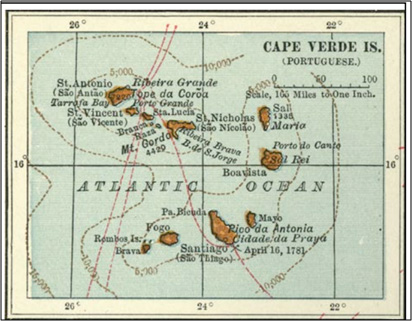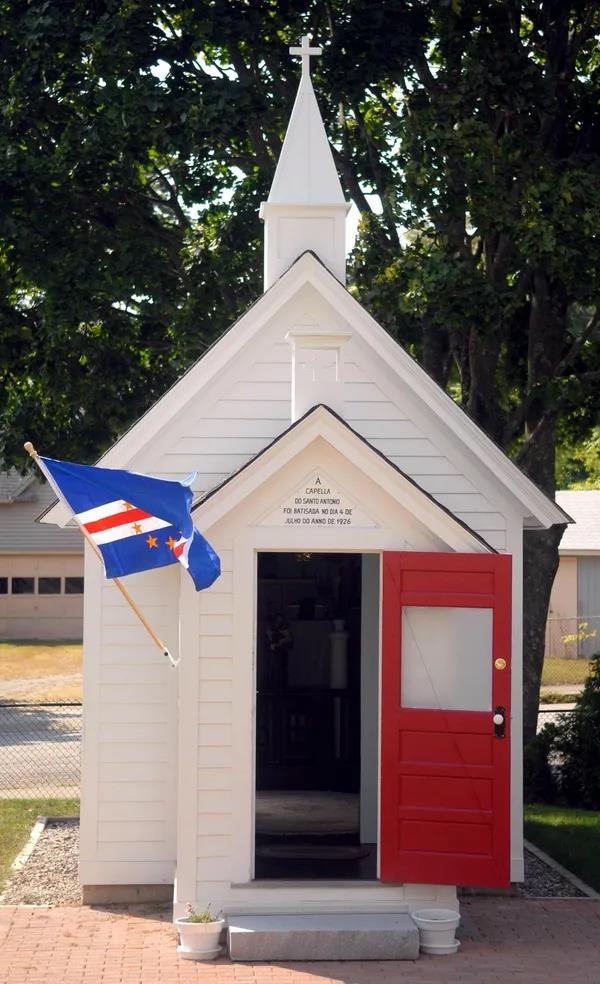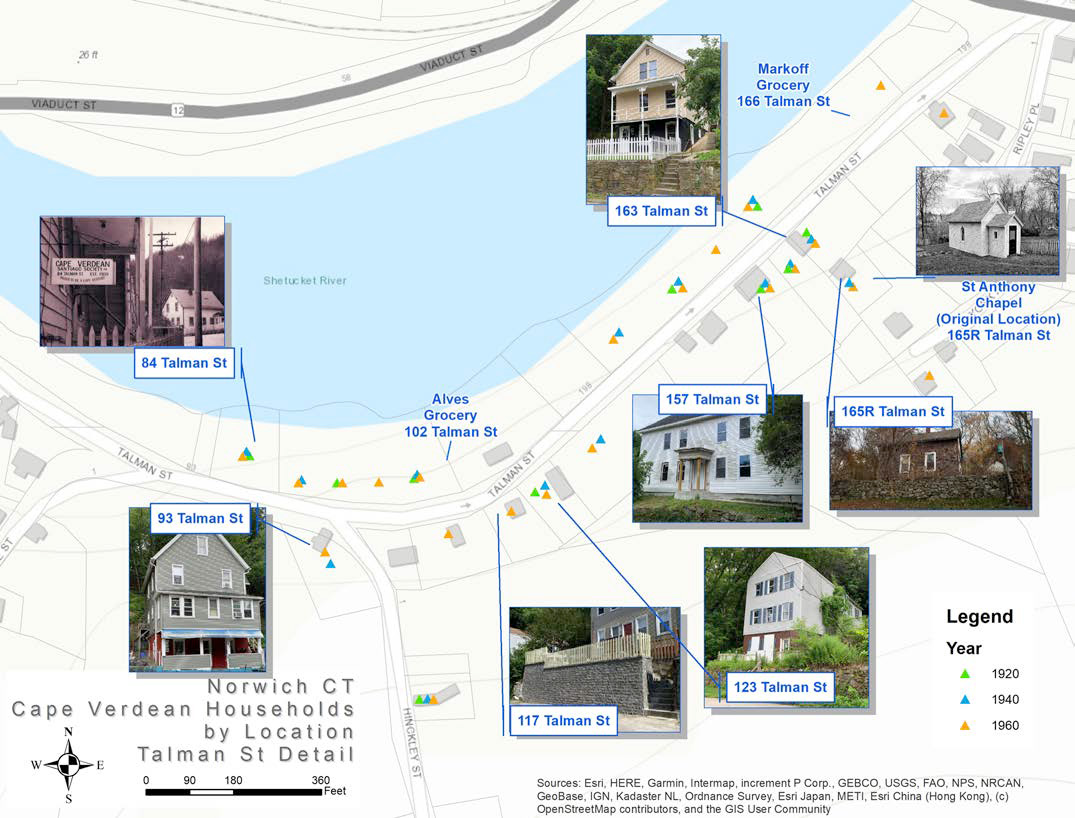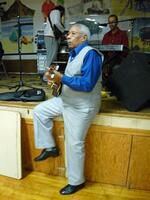Shannon Andros
Norwich Free Academy
TEACHER'S SNAPSHOT
Subjects:
Immigration, Music
Course Topics/Big Ideas:
Cultural Diversity and Connecticut State Identity
Town:
New London, Norwich
Grade:
High School
Lesson Plan Notes
From the late 19th to the mid-20th centuries, immigrants from the islands of Cape Verde (known today as the Republic of Cabo Verde), the former Portuguese colony located off the coast of Senegal, formed a small but vital community in Norwich, Connecticut. According to historian Rachel Carley, Cape Verdeans have a complex racial-ethnic heritage linked to Cape Verde’s history as a European colony and a former way station in the African slave trade. Motivated by the desire to escape persistent poverty, regular droughts, and hunger, Cape Verdean migration to the United States stands out as a significant movement within the African diaspora.
Throughout the last three centuries, Cape Verde has experienced famine approximately once every eight years, leading to the loss of over 120,000 lives between 1774 and 1975—the year when the islands achieved independence from Portugal. Seeking better opportunities, Cape Verdeans dispersed worldwide, establishing communities in Dakar and other parts of Senegal, the Portuguese colonies of Angola, Guinea-Bissau, and Mozambique, as well as in Portugal and the Netherlands. Notwithstanding these global migrations, the United States emerged as the primary destination for the majority of Cape Verdean emigrants. At the time of their nation’s independence, approximately 250,000 Cape Verdeans were residing in the United States, a population nearly equivalent to that of the newly independent republic itself. Today, Connecticut has the third largest Cape Verdean population in the United States (after Rhode Island and Massachusetts), with active and growing communities in Bridgeport, Waterbury, and Norwich.
Adapted from Cape Verdeans in Norwich (2022), written by Rachel Carley, sponsored by the St. Anthony Chapel Foundation of Norwich, Connecticut and the Connecticut State Historic Preservation Office, and funded by the Community Investment Act of the State of Connecticut.
ESSENTIAL QUESTION
SUPPORTING QUESTIONS
- What are the Cape Verdean cultural influences in Norwich, Connecticut?
- What was life like for Cape Verdean families in the late 19th to mid-20th centuries?
- Based on the documents, what are significant attributes of Cape Verdean culture?
- How would you describe the stories of Cape Verdean people who immigrated to Norwich?
ACTIVITY
Building Schema
1. Begin the class by initiating a discussion with the following question: “Imagine that you move to a different place where the language and culture are different. What would you do to maintain your cultural heritage while adapting to a new place?”
2. Go over the historical background of Cape Verdean immigration to Connecticut.
This activity could be done two ways. It could be done as a stations activity as described below, or the lesson could be conducted as a group research Jigsaw. To do this, divide students into four groups and assign them each a station. Students will analyze the document and then conduct their own independent research using the sources provided and the questions in the graphic organizer to guide their thinking. Student groups will create a slideshow to demonstrate their learning, and each student group will share out to the class.
Stations
1. Organize students in groups of 3-5 people.
2. Students will explore each of the stations and collaborate through discussion and using the source information to complete the graphic organizer.
3. Once students have had enough time to explore each station, ask students to select one person from their group to be the speaker. Assign each group a station that they will be in charge to share out for.
Closure
1. Wrap up the lesson with an exit ticket. Distribute a post-it or ask students to write their response on the back of the graphic organizer. Ask students to either respond to the question: According to the documents, how do Cape Verdeans define their “identity” and what are some cultural traditions that contribute to this identity? OR ask students to write down one thing that they learned in class today that they think others should know about.
2. Have students then select their choice for “Taking the Lesson One Step Further.”
3. If time permits, students can share out their exit ticket responses.
OPPORTUNITIES FOR ASSESSMENT
In addition to completing the graphic organizer during the stations activity and using a jigsaw approach to communicate findings, students will take the lesson one step further by choosing one of the following options:
- Research and/or interview one of the oral history participants from Norwich. See page 23 for a list of names.
- Illustrate a timeline of important events that tell the story of how Cape Verdeans immigrated to and thrived in Norwich.
- Write a letter to a policymaker that (a) describes an idea to memorialize Norwich’s early Cape Verdean immigrants (b) suggests ideas or plans to restore Cape Verdean landmarks like the former Cape Verdean Santiago Society, Inc.
RESOURCE TOOL KIT

Document A: Cultural Background
Adapted from Carly, Rachel, Cape Verdeans in Norwich (2022) by Shannon Andros for Teach It, 2024.

Document B: St. Anthony’s Chapel
Excerpt from Bowles, Adam. “Chapel Important to Norwich Cape Verdean Community.” Norwich Bulletin, September 23, 2007.

Document C: Norwich 1920-1960 Census Data
Excerpted from Cape Verdeans in Norwich (2022), written by Rachel Carley, sponsored by the St. Anthony Chapel Foundation of Norwich, Connecticut and the Connecticut State Historic Preservation Office, and funded by the Community Investment Act of the State of Connecticut.

Document D: Map Activity
Adapted from Rachel Carly, Cape Verdeans in Norwich (2022) by Shannon Andros for Teach It, 2024.

Station E: Music Inquiry
Clip One: 2019 Cape Verdean Festival Norwich, CT, Shantel C Performance, courtesy Global City Norwich, YouTube
Clip Two (Optional): Jorge Job Performing at Cape Verdean Social Club, Waterbury, 2012, courtesy Connecticut Museum of Culture and History, Connecticut Digital Archive
ADDITIONAL RESOURCES
Places to GO
St. Anthony’s Chapel, Norwich
Mystic Seaport Museum, Mystic
Cape Verdean Social Club, Waterbury
Museum of Connecticut History and Culture, Hartford
Things To DO
Explore the archives: Connecticut Cape Verdean Community History Project
Attend a Cape Verdean festival in Connecticut, Massachusetts, or Rhode Island
Explore stone masonry in Norwich and learn the history of those built these enduring works of art. Read more about it.
Do a crossword puzzle of Cape Verdean facts (Questions HERE, Answer Key HERE)
Share one of the sources with an adult in your life. Ask them to review the content and interview them for their feedback and thoughts of remembering their historic memories of Norwich.
Support a Cape Verdean restaurant or cook one of the dishes mentioned in the documents at home.
Read more:
- Halter, Marilyn. Between Race and Ethnicity: Cape Verdean American Immigrants 1860-1965. University of Illinois Press, 1993. Includes appendix lists “Arriving Vessels from the Cape Verde Islands to New Bedford, Massachusetts, 1860-1920,” detailing vessel names, rig, captain, the island from which the ship sailed, arrival date and the number of passengers on board.
- Hayden, Robert. African Americans and Cape Verdean-Americans in New Bedford: A History of Community and Achievement. Boston, 1993. Provides entries on a range of men and women who might otherwise have been lost to obscurity; along with buildings; social and religious institutions; ships; and provides useful statistics.
Websites to VISIT
Articles to READ
Cape Verdeans in Norwich. Carley, Rachel. 2021-2022. Sponsored by the St. Anthony Chapel Foundation of Norwich, Connecticut and the Connecticut State Historic Preservation Office, and funded by the Community Investment Act of the State of Connecticut.
“Africans in Search of the American Dream: Cape Verdean Whalers and Sealers” by Nancy Finlay, ConnecticutHistory.org.



